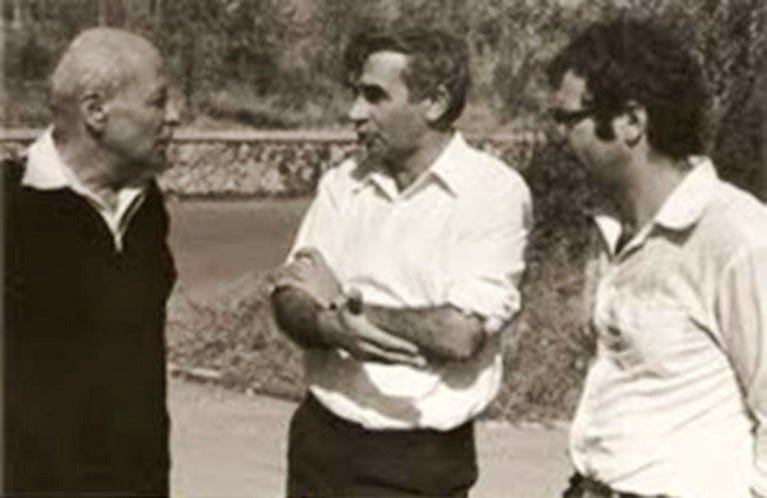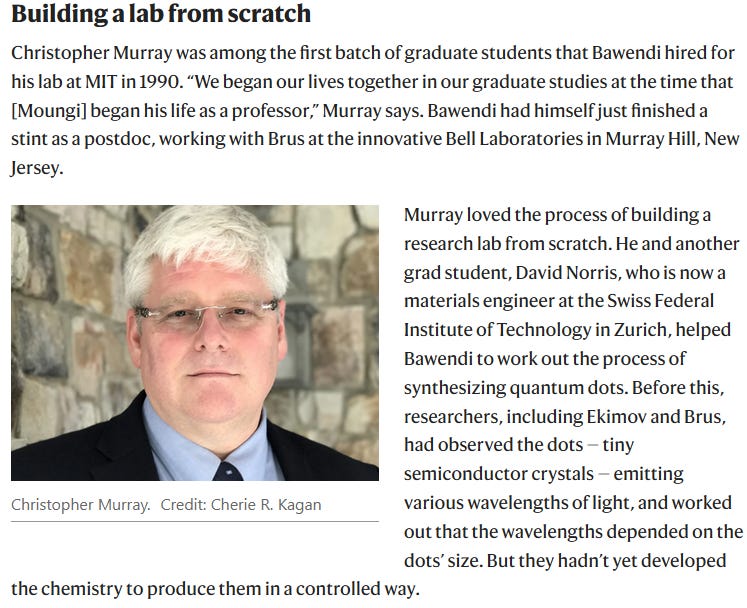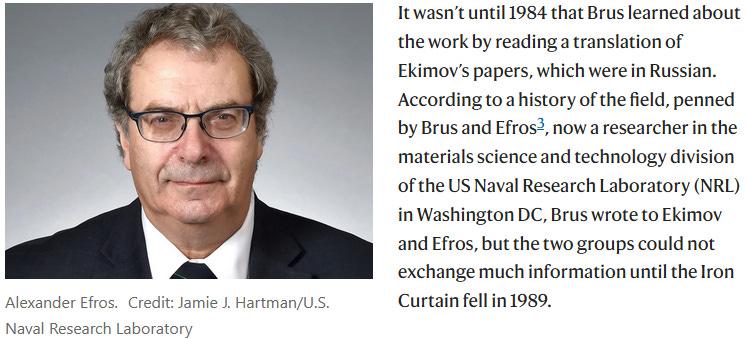Meet the unsung scientists behind the Nobel for quantum dots
Nature speaks to those who worked alongside this year’s chemistry laureates to develop the award-winning nanocrystals.
By Neil Savage
October 18, 2023
Nobel prizewinners almost never work in isolation. They might be the driving force behind their award-winning discoveries, but a whole host of collaborators, postdoctoral fellows and graduate students helped to realize their vision in the laboratory.
Where do those scientists end up? What is it like for them to be part of a celebrated piece of scientific history? Nature caught up with some of the researchers who contributed to the work recognized by this year’s Nobel Prize in Chemistry, given to quantum-dot pioneers Moungi Bawendi at the Massachusetts Institute of Technology (MIT) in Cambridge, Louis Brus at Columbia University in New York City, and Alexei Ekimov, previously at New York-based company Nanocrystals Technology.
Bawendi’s group developed a strategy that encouraged semiconductor nanoparticles to assemble themselves into consistent, complex structures. The work would eventually be published in a seminal 1993 paper1, and would also form chapters in Murray’s PhD thesis. ”You can think about them as Lego blocks,” Murray says of the nanocrystals. “In the state of their isolated existence, they have lots of interesting properties, but Lego blocks are most interesting when you start putting them together in creative ways.”
Manoj Nirmal was another of Bawendi’s original graduate students. He remembers Bawendi giving a talk at MIT, trying to recruit people for his lab. “What I was really intrigued and fascinated by was, it was very different than anything else that was happening in the [chemistry] department,” Nirmal says. Most chemists at the time were not melding their work with ideas from solid-state physics, as Bawendi intended to do.
In his final year of graduate school, Nirmal won a fellowship to study under Brus at Bell Labs for the summer. But he ended up staying longer — the entire year — as Brus’s and Bawendi’s teams continued to explore the properties of quantum dots. He remembers the work fondly. “My colleagues were just absolutely incredible, so that was the real pleasure,” he says.
The chemistry Nobel is the icing on the cake, say Murray and Nirmal. “It’s extremely exciting to see that what [Moungi] built is recognized as part of the Nobel prize,” Murray says.
Behind the Iron Curtain
But these two teams were not the only ones to study quantum dots in those heady days of discovery. In the early 1980s, Ekimov had observed size-dependent light emission effects in glass doped with quantum dots made of copper chloride. During that time, he worked at the S.I. Vavilov State Optical Institute in what was then Leningrad in the Soviet Union (now St Petersburg in Russia). Alexander Efros, a theoretician at the A.F. Ioffe Institute, also in Leningrad, was collaborating with Ekimov to study how the size of the crystals affected the way in which electrons were confined within the crystals and, thus, which wavelengths of light they absorbed and emitted. “It was a major breakthrough — the first visual observation of the quantum confinement effect,” Efros says.
Efros recalls first hearing of Brus’s work when his department head called him at home and told him that the institute’s KGB officer wanted to see him urgently. Every university in those days had a representative of the Soviet spy agency assigned to control the activity of scientists, Efros explains, so the call had him worried. “I said, ‘My goodness, what did I do wrong?’”
He went to see the KGB officer, who asked him, “Do you know who is Brus?” Efros said, “Who is Brus? I don’t know him.” The agent handed him a letter and a package of preprints from a journal the scientists didn’t have access to.
As soon as he read the papers, Efros excitedly called Ekimov. “We meet and start to celebrate because we learnt that somebody else in the world is working on nanocrystals,” Efros says. And it was not just anyone, Efros adds; it was a “person from Bell Labs”. That suggested to the researchers that they were on to something.

An appreciation for applied science
Decades later, quantum dots have found commercial applications, including in television displays and lighting, improving the brightness and colour of light-emitting diodes (LEDs). They are also being used for medical diagnostics as fluorescent markers that can bind to cancer cells, for instance. Because of these applications, many of the researchers who were involved in the early days of quantum dots used their expertise to connect with industry.
For example, Bawendi founded Lumicell, a company based in Newton, Massachusetts, that makes quantum dots for tagging and lighting up cancer cells during surgery. After leaving MIT, Murray went to the IBM T.J. Watson Research Center in Yorktown Heights, New York, to create not only quantum dots for displays, but also a wider range of nanomaterials, including magnetic particles used in recording devices.
Nirmal left academia to work for the company 3M, which makes a wide range of consumer and business products. “Both Moungi and Louis had this appreciation for the application of science, so that drew me to an industrial-research and product-development career,” Nirmal says. Although his early work at 3M drew on his quantum-dot research, these days Nirmal works on some of the firm’s most familiar products, including Scotch tape and Post-it Notes, as a lead product development specialist at the company’s labs in Maplewood, Minnesota.
Murray eventually returned to academia and is now at the University of Pennsylvania, in Philadelphia, where he tries to impart that same appreciation for doing applied science to his students. “Being now in an environment where I get to work with students and contribute across the whole vertical integration spectrum, that’s really exciting,” he says.
His lab is one of several delving into the next phase of this work. “There is a whole other dimension of quantum-dot research that looks at the intrinsic quantum nature of the optical excitations in the quantum dots to make components that are potentially interesting for quantum computing, quantum sensing and quantum communication,” he says. “But that’s another 20 years down the road.”
doi: https://doi.org/10.1038/d41586-023-03179-z







